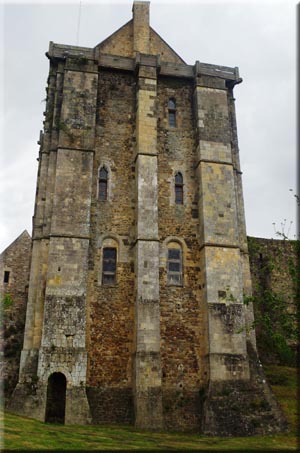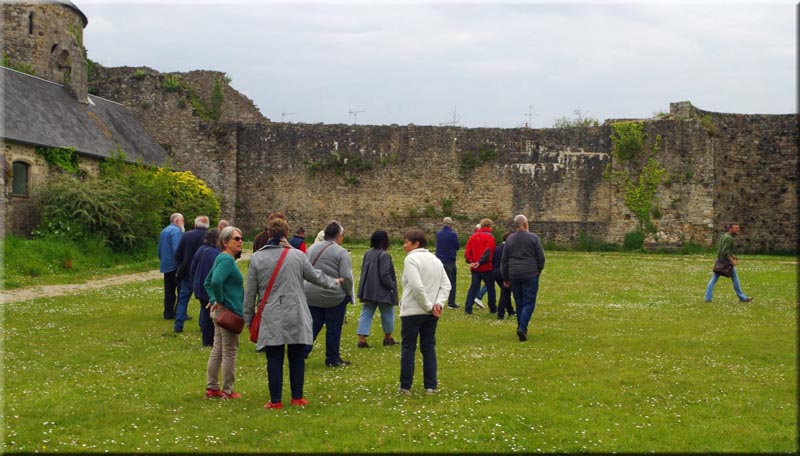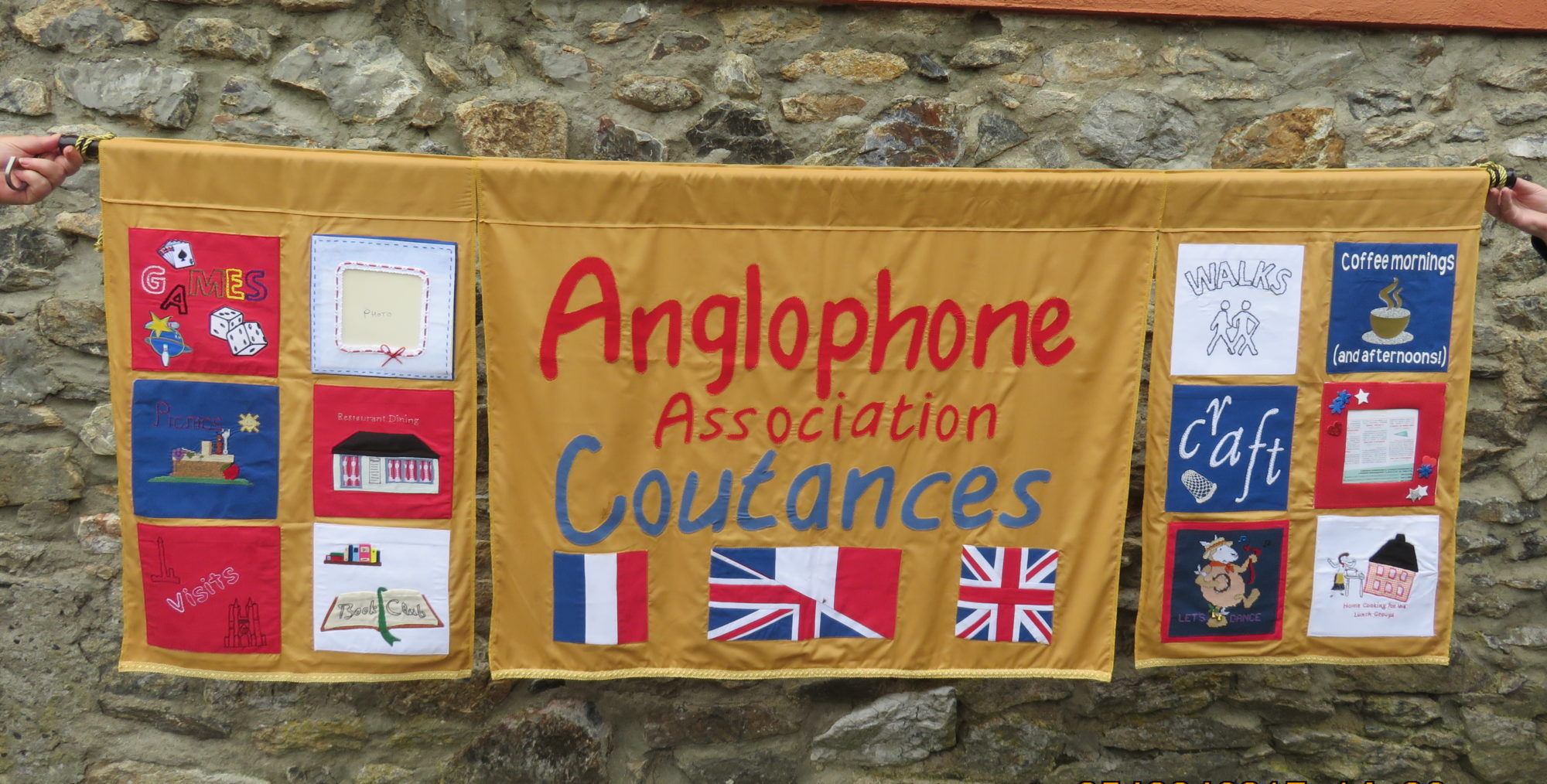
Once again, our excellent guide and historian, Simon Tasset, brought another piece of Normandy stone to life and, in his inimitable style, allowed us all to imagine the reality of an earlier time.
He explained the relevance and importance of the site of this ancient château, originally of timber construction in a motte and bailey format, at this river crossing. The river itself had been diverted from its initial course to enhance the defence of the chateau. A church on the site had been recorded as early as the time of the French Duke of Normandy, Richard the Good (980 – 1026).
We learned of the ambitions and political strategies of one of its earliest documented owners, the colourful and war-hungry baron, Geoffroy d’Harcourt. His ambitions and aspirations had consequences far beyond St Sauveur and even Normandy, influencing English history and creating a link to England that materialised in its reconstruction in stone by English stone masons. In many respects it was considered locally as an English castle and remained a robust architectural statement until seriously damaged by the RAF in 1944.

Geoffroy, you see, was not a peace-loving baron and had military arguments with his close neighbours as well as further abroad (Flanders War). After a “private war” with baron Robert Bertan of Briquebec he was forced into exile, fleeing to England (1343) where he acknowledged the sovereignty of Edward III. He later assisted Edward to land in Normandy prior to the Battle of Crécy. Despite such treachery he was forgiven by the French king, Philippe de Valois, who bestowed upon him the responsibility of defending Lower Normandy. However old habits die hard with the treacherous and Geoffroy next supported a contender to the French throne, Charles of Navarre and he organised military action on behalf of Charles. He was killed in a skirmish, but not until after he had already bequeathed the castle of St Sauveur and it’s sovereignty to the English king in his will.
Geoffroy had spent much time and expense rebuilding the castle in stone and refortifying it to make it ready to receive the King of England. The French king, Philippe de Valois had confiscated the castle (1343) but after Geoffroy’s royal pardon in 1346 Philippe allowed him to continue with the rebuilding programme.
Understandably the two periods of English occupation of the castle at each end of the Hundred Years War (1357 – 1375 by Edward III and 1420 – 1450 by Henry V and Henry VI) were not popular with the French who laid siege twice.
The fortifications undertaken by Geoffroy included the perimeter stone walls with towers which replaced the timber palisades of the interior space of the chateau which was formerly referred to as the barnyard. There was also a dungeon documented and that can be seen to be the ground floor level of the large, remaining keep tower. Note the absence of windows on the ground.

Simon had a particularly large Harry Potter style ancient key in his hand and he used it to open the door of the keep. The dungeon level had no windows and was dark and inhospitable. A narrow, steep spiral staircase in the corner took us up to the first level, a large single room which had a huge fireplace and windows as well as a higher ceiling. The integral mantel of the very wide fireplace is testimony to the work of an English Master Mason since it differs from the more superficially attached French mantels of the time.
The second storey of the keep Simon described as Royal private sleeping quarters, with a somewhat more secretive and intimate nature, accessed by steps down into the room from the spiral staircase, thus allowing some soundproofing from the traffic on the staircase. The quarters also had the luxury of a loo hidden in the opposite corner to the entrance comprising of a hole in the floor. The third storey were guards quarters and we did not visit them due to the unsafeness of the floor. From an arched window on the second floor we could see the Abbey buildings in the distance behind pine trees. On exiting the keep we walked into the courtyard where we noticed the rise in the air temperature outside. One boundary of the courtyard is a fine fifteenth century stone building dating from Henry V’s occupation, with a chapel attached (photos bottom right). This large building gave access to the kitchens (first floor) which in turn had earlier connected to the adjacent Keep tower on the first level via an elevated timber walkway. The adjoining chapel building is now a visitors’ information office.
The interior of the perimeter curtain wall shows evidence of previous adjoining rooflines of ancillary buildings within the courtyard of the castle. There was obviously greater accommodation in an earlier era since Louis XIV turned it into a hospital in 1598 and it was also used as a prison during the French Revolution. Truly a chateau Polyvalente!
Another fine piece of active imaging by Simon …. Thank you.

